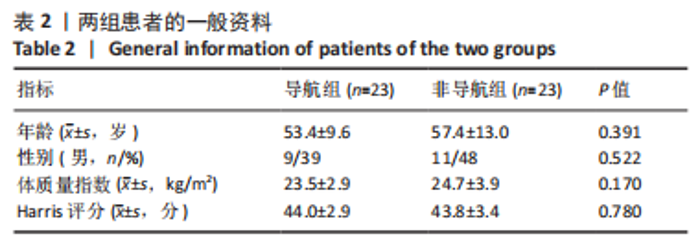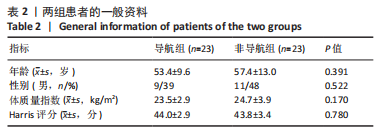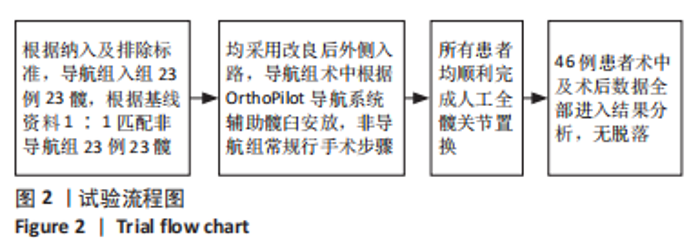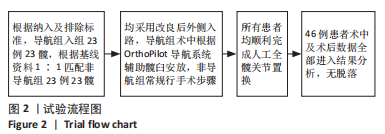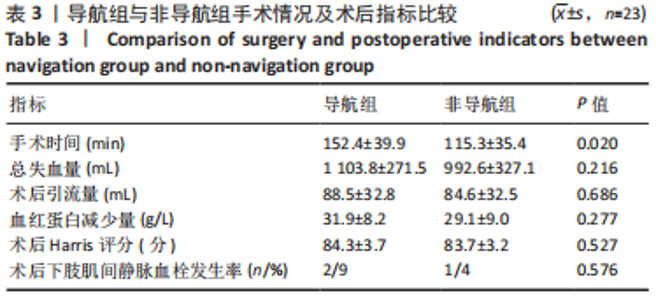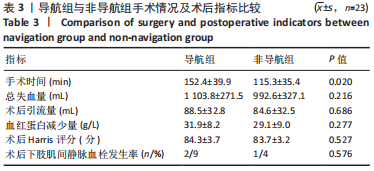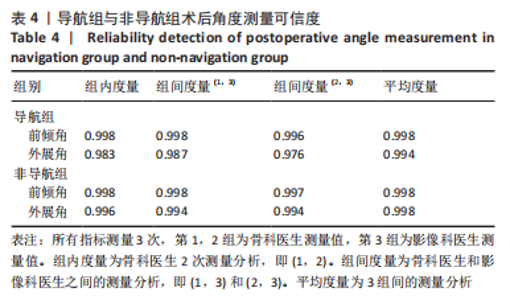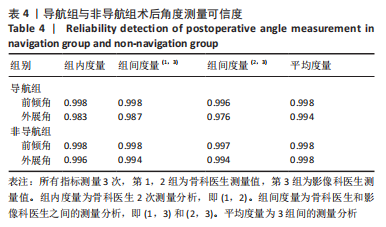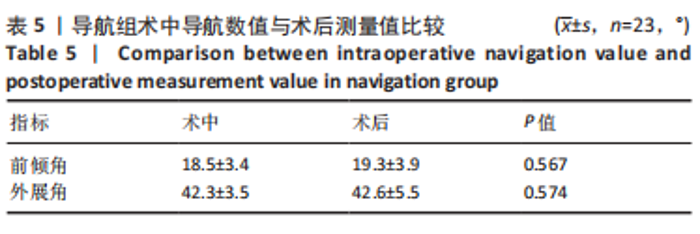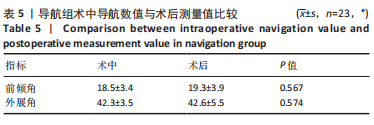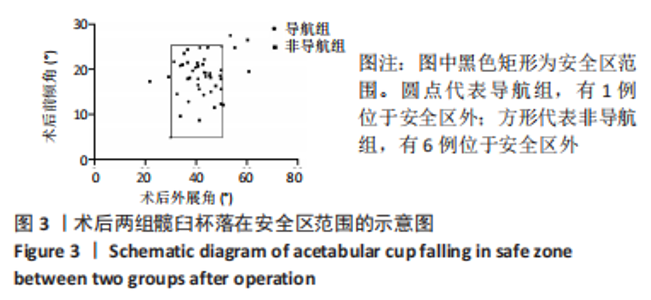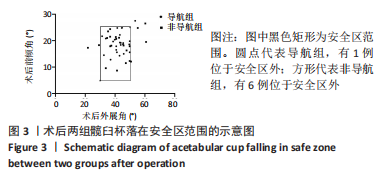[1] LEARMONTH I D, YOUNG C, RORABECK C. The operation of the century: total hip replacement. Lancet. 2007;370(9597):1508-1519.
[2] MONT MA. Hip arthroplasty: edited by Harlan C. Amstutz, MD. Churchill Livingstone, New York, 1991. J Arthroplasty. 1992;7(2):221.
[3] BOZIC KJ, KURTZ SM, LAU E, et al. The epidemiology of revision total hip arthroplasty in the United States. J Bone Joint Surg Am. 2009;91(1): 128-133.
[4] CALLANAN MC, JARRETT B, BRAGDON CR, et al. The John Charnley Award: risk factors for cup malpositioning: quality improvement through a joint registry at a tertiary hospital. Clin Orthop Relat Res. 2011;469(2):319-329.
[5] DE PALMA L, PROCACCINI R, SOCCETTI A, et al. Hospital Cost of Treating Early Dislocation following Hip Arthroplasty. HIP International. 2012; 22(1):62-67.
[6] WATERS G, D’ALESSANDRO P, YATES P. Functional navigation in hip resurfacing. ANZ J Surg. 2021;91(1-2):168-173.
[7] MASAOKA T, YAMAMOTO K, SHISHIDO T, et al. Study of hip joint dislocation after total hip arthroplasty. Int Orthop. 2006;30(1):26-30.
[8] MEI XY, ETEMAD-REZAIE A, SAFIR OA, et al. Intraoperative measurement of acetabular component position using imageless navigation during revision total hip arthroplasty. Can J Surg. 2021;64(4):E442-E448.
[9] KALTEIS T, HANDEL M, BäTHIS H, et al. Imageless navigation for insertion of the acetabular component in total hip arthroplasty: is it as accurate as CT-based navigation. J Bone Joint Surg Br. 2006;88(2): 163-167.
[10] NAITO Y, HASEGAWA M, TONE S, et al. The accuracy of acetabular cup placement in primary total hip arthroplasty using an image-free navigation system. BMC Musculoskelet Disord. 2021; 22(1): 1016.
[11] MIGLIORINI F, CUOZZO F, OLIVA F, et al. Imageless navigation for primary total hip arthroplasty: a meta-analysis study. J Orthop Traumatol. 2022;23(1):21.
[12] GROSS JB. Estimating allowable blood loss: corrected for dilution. Anesthesiology. 1983;58(3):277-280.
[13] NADLER SB, HIDALGO JH, BLOCH T. Prediction of blood volume in normal human adults. Surgery. 1962;51(2):224-232.
[14] MCLAREN RH. Prosthetic hip angulation. Radiology. 1973;107(3): 705-706.
[15] LEWINNEK GE, LEWIS JL, TARR R, et al. Dislocations after total hip-replacement arthroplasties. J Bone Joint Surg Am. 1978;60(2):217-220.
[16] TEZUKA T, HECKMANN ND, BODNER RJ, et al. Functional Safe Zone Is Superior to the Lewinnek Safe Zone for Total Hip Arthroplasty: Why the Lewinnek Safe Zone Is Not Always Predictive of Stability. J Arthroplasty. 2019;34(1):3-8.
[17] 崔瑞开.全髋关节置换术中臼杯外展角的影像学研究[D].长春:吉林大学,2019.
[18] 吕明,吴坚,柳剑,等.全髋置换术后髋臼和股骨假体联合前倾角的CT研究[J].重庆医学,2014,43(24):3127-3129,3132.
[19] KOSIYATRAKUL A, LUENAM S, CHOTANAPHUTI T. Measurement of acetabular cup anteversion with the circle theorem. J Med Assoc Thai. 2009; 92 Suppl 6:S128-S133.
[20] ACKLAND MK, BOURNE WB, UHTHOFF HK. Anteversion of the acetabular cup. Measurement of angle after total hip replacement. J Bone Joint Surg Br. 1986;68(3):409-413.
[21] HASSAN DM, JOHNSTON GH, DUST WN, et al. Radiographic calculation of anteversion in acetabular prostheses. J Arthroplasty. 1995;10(3): 369-372.
[22] WIDMER KH. A simplified method to determine acetabular cup anteversion from plain radiographs. J Arthroplasty. 2004;19(3):387-390.
[23] LIAW CK, HOU SM, YANG RS, et al. A new tool for measuring cup orientation in total hip arthroplasties from plain radiographs. Clin Orthop Relat Res. 2006;451:134-139.
[24] 田润,雷雨田,王坤正,等.机器人辅助人工全髋关节置换术中及术后测量髋臼角度比较研究[J].中国修复重建外科杂志,2021, 35(10):1246-1250.
[25] AGARWAL S, ECKHARD L, WALTER WL, et al. The Use of Computer Navigation in Total Hip Arthroplasty Is Associated with a Reduced Rate of Revision for Dislocation: A Study of 6,912 Navigated THA Procedures from the Australian Orthopaedic Association National Joint Replacement Registry. J Bone Joint Surg Am. 2021;103(20):1900-1905.
[26] HASEGAWA M, TONE S, NAITO Y, et al. Comparison of the accuracies of computed tomography-based navigation and image-free navigation for acetabular cup insertion in total hip arthroplasty in the lateral decubitus position. Comput Assist Surg (Abingdon). 2021;26(1):69-76.
[27] LASS R, OLISCHAR B, KUBISTA B, et al. Total Hip Arthroplasty Using Imageless Computer-Assisted Navigation-2-Year Follow-Up of a Prospective Randomized Study. J Clin Med. 2020;9(6):1620.
[28] HEPINSTALL M, MOTA F, NAYLOR B, et al. Robotic-Assisted Total Hip Arthroplasty in Patients Who Have Developmental Hip Dysplasia. Surg Technol Int. 2021;39:338-347. |
